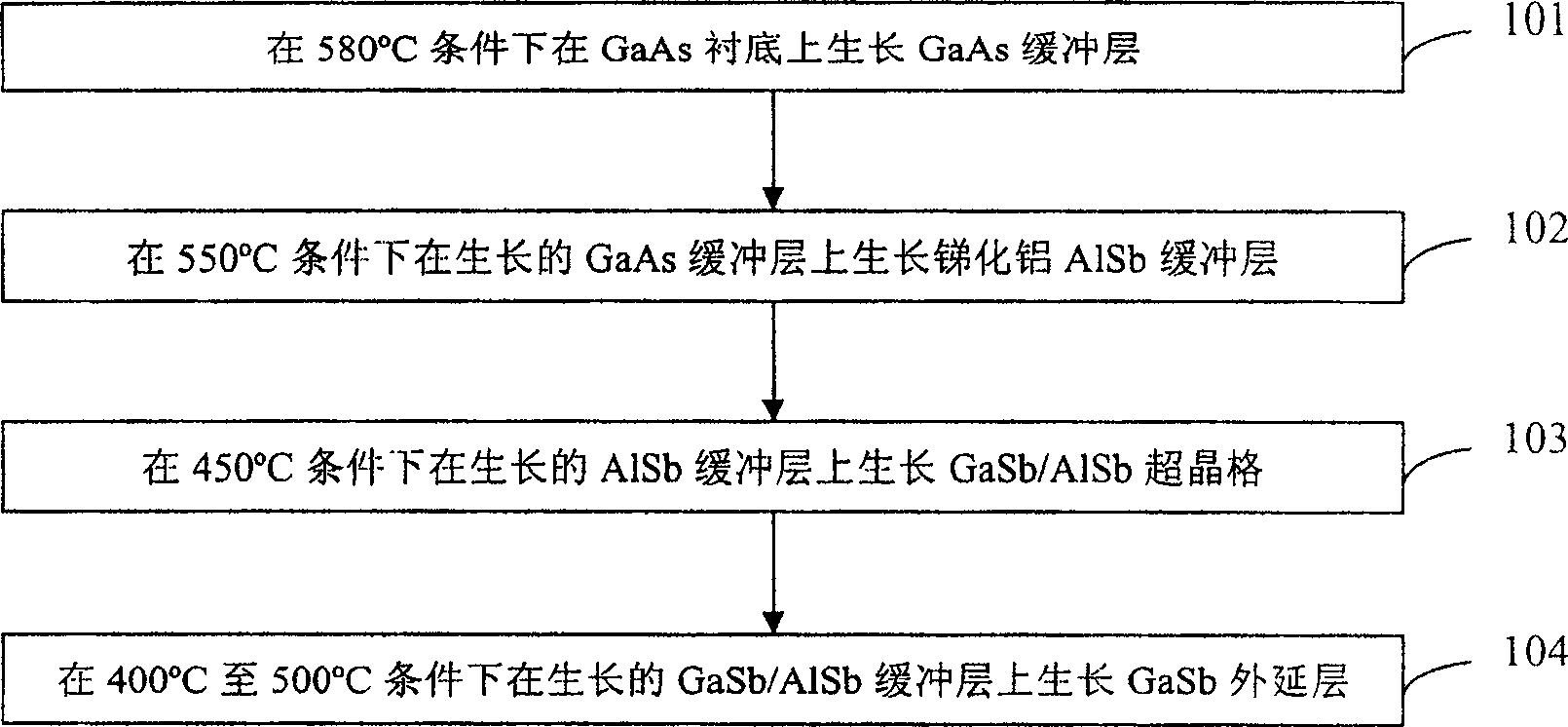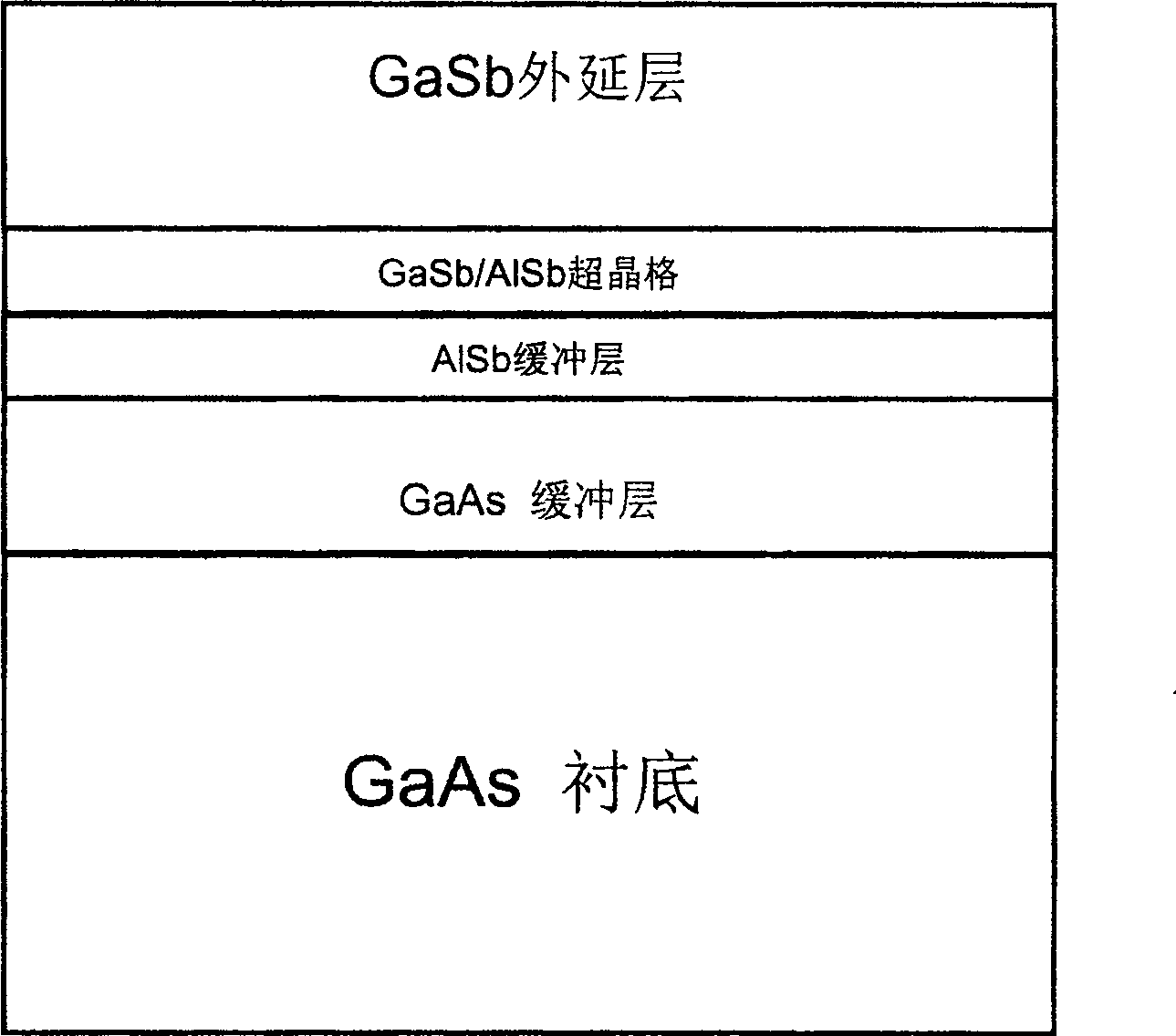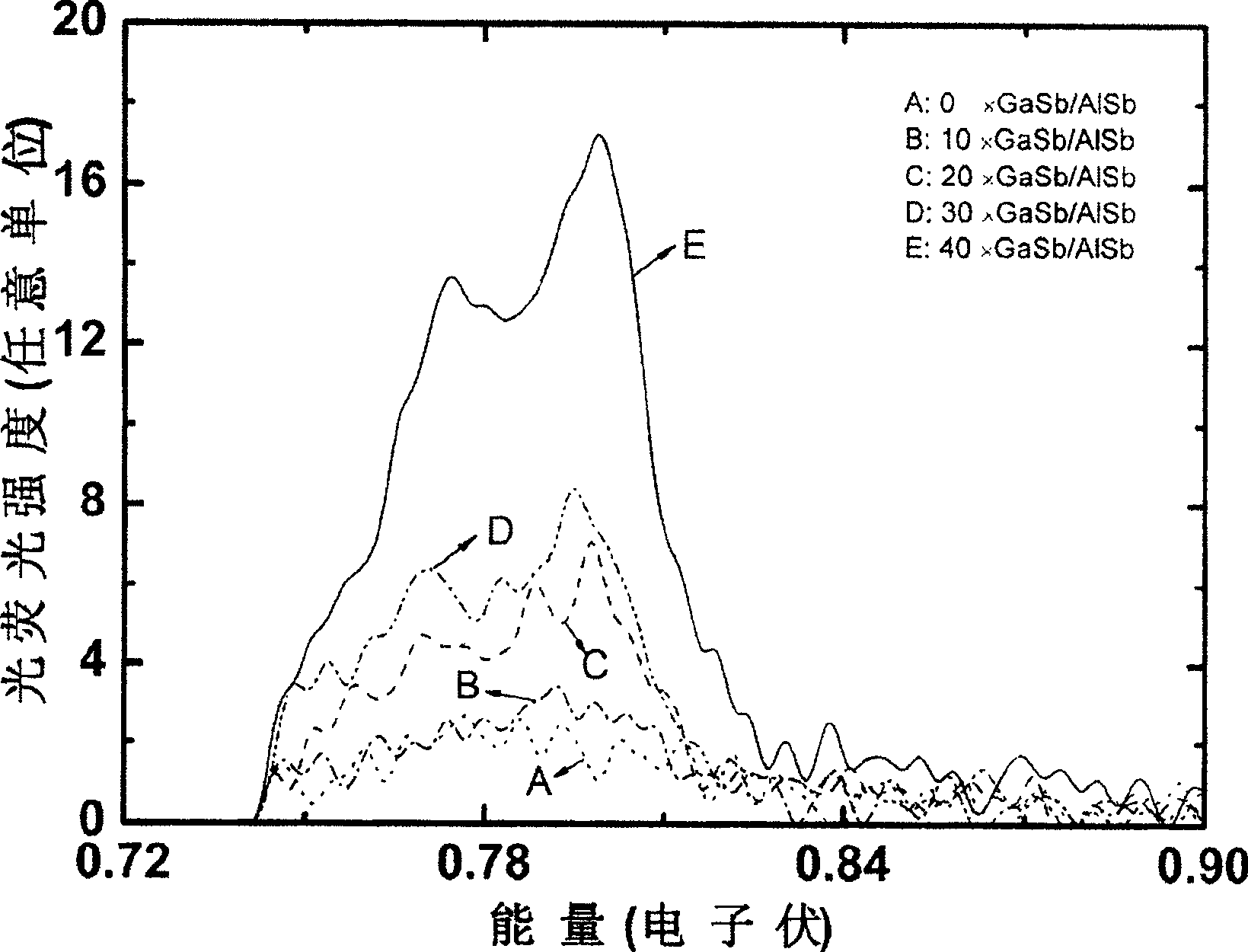Method for epitaxial growth of gallium antimonide on gallium arsenide substrate
A technology of epitaxial growth and gallium antimonide, which is applied in the direction of electrical components, semiconductor/solid-state device manufacturing, circuits, etc., can solve the problems of high dislocation density, low peak intensity, poor crystal quality, etc., and achieve the reduction of density and screw position The effect of reducing the error density and increasing the strength
- Summary
- Abstract
- Description
- Claims
- Application Information
AI Technical Summary
Problems solved by technology
Method used
Image
Examples
Embodiment 1
[0069] After deoxidizing and degassing the cleaned GaAs substrate at high temperature, the temperature of the GaAs substrate is lowered to 580°C, the shutter of the Ga source furnace is turned on, and the Ga source temperature is 1150°C, the GaAs high temperature buffer layer is crystallized on the GaAs substrate Grow. The growth time of the GaAs buffer layer is 30 minutes, and the thickness is 0.5 μm. The pressure of the molecular beam epitaxial growth chamber is 5×10 -9 mbar.
[0070] Then close the Ga source furnace shutter, lower the substrate temperature to about 550°C, close the As source furnace shutter, open the Sb source furnace shutter, and open the Al source furnace shutter. The Al source temperature is 1180°C, and a low-temperature AlSb buffer is grown on the GaAs buffer layer. The layer has a growth time of 12 minutes and a thickness of about 100 nm. The pressure of the molecular beam epitaxial growth chamber is 5×10 -9 mbar.
[0071] Then the Al source furnace shutte...
Embodiment 2、3
[0074] The GaSb / AlSb superlattices with different periods are 20(C) and 30(D), and the rest are the same as in Example 1. The PL spectrum measured at 10K is as follows image 3 Shown.
PUM
 Login to View More
Login to View More Abstract
Description
Claims
Application Information
 Login to View More
Login to View More - R&D
- Intellectual Property
- Life Sciences
- Materials
- Tech Scout
- Unparalleled Data Quality
- Higher Quality Content
- 60% Fewer Hallucinations
Browse by: Latest US Patents, China's latest patents, Technical Efficacy Thesaurus, Application Domain, Technology Topic, Popular Technical Reports.
© 2025 PatSnap. All rights reserved.Legal|Privacy policy|Modern Slavery Act Transparency Statement|Sitemap|About US| Contact US: help@patsnap.com



